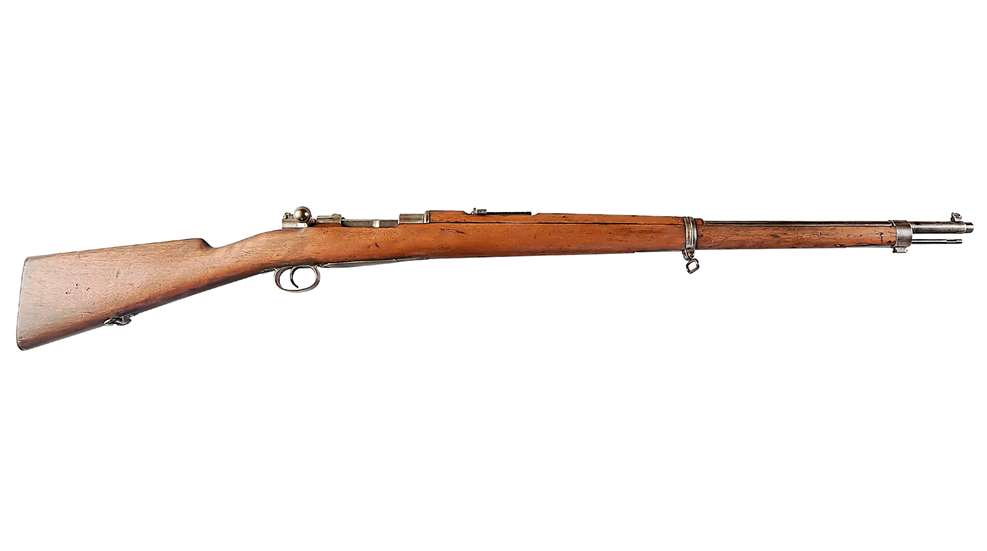.jpg)
Month: October 2024

The United States regulars during the Spanish-American War and subsequent Philippine-American War (1898-1902), and the British in the Second Boer War (1899-1902), were armed with very good rifles—the Krag-Jorgensen and Magazine Lee-Enfield, respectively. Unlike the Mausers carried by the majority of their adversaries, however, neither the Krag nor the Enfield could be reloaded rapidly, often putting their users at a disadvantage.
Designed by Paul Mauser, the Modelo 1893, adopted by the Spanish on Dec. 7, 1893, was a superb arm—the first of its breed to have a box magazine entirely enclosed within the stock. More importantly, it could be speedily recharged with five rounds by means of a steel stripper clip.
The ’93’s action, while not as strong as some later models, was still extremely well-designed, employing a bolt with dual forward locking lugs and a non-rotating extractor. The lower-front portion of the bolt body was flattened, ostensibly to assist in chambering rounds, however, this feature was found to be superfluous and was eliminated on future Mausers.
A charger slot was milled into the receiver bridge. This permitted the shooter to insert a loaded clip and smoothly and quickly strip off five rounds into the magazine, a commonly recognized practice today, but something of an innovation at the time of the rifle’s introduction.
Model 1893s were chambered for a new cartridge (first used in the Model 1892 Mauser), the 7×57 mm Mauser—one that would see widespread use not only by Spain but also with a number of other nations. The original load, and the one that was issued at the time of the Spanish-American War, featured a 173-grain bullet with a muzzle velocity of some 2,296 f.p.s., resulting in a muzzle energy of 2,025 ft.-lbs. This, and variants of the 7×57 mm Mauser, would eventually become popular for sporting purposes.

The 1893 Mauser rifle was a svelte, business-like affair, measuring some 48.6″ long and weighing 8 lbs., 13 ozs., in a well-balanced package. The walnut stock ran to within 3¾” of the muzzle, its butt emblazoned with a Spanish coat of arms surmounting the date of issue. Most metal parts were blued, though some, most notably the bolt, were left in the white. The receiver of the example shown here, which was manufactured by Ludwig Loewe & Co. in Berlin, is marked in the usual fashion, with the Spanish coat of arms on the top and the rifle’s designation and Loewe’s name and city of origin on the left side.
The rifle’s sturdy, ladder-style rear sight was graduated to 2,000 meters, the front sight involving a blade that was drift-adjustable for windage. A Model 1893 knife bayonet featuring a 9¾” blade and wood-paneled grip was standard-early-issue.
Modelo 1893 Spanish Mausers were manufactured in Germany by Mauser, Ludwig Loewe & Co. and Loewe’s successor Deutsche Waffen- und Munitionsfabriken (DWM.) As well, they were built under contract in Spain by Fábrica de Armas and Industrias de Guerra de Cataluña and in Belgium by Fabrique Nationale, the latter also offering a carbine version. Production of the Spanish 1893 Mauser ran for half a century, with German manufacturing beginning in 1893 and ceasing in 1899—and Spanish construction starting in 1896 and running until 1943.
From a collecting standpoint, the most desirable Model 1893s are earlier ones with markings indicating that they could have seen service during the Spanish-American War. The specimen shown here is just such an arm, dated 1896 with all serial-numbered parts matching. As such, it is worth $775.
—Garry James, Field Editor
Gun: Mauser Español Modelo 1893
Manufacturer: Ludwig Loewe & Co.
Chambering: 7×57 mm Mauser
Condition: NRA Fine (Antique Gun Standards)
Value: $775

